Chapter 3: The Medical Rep Experiment and Our Unexpected Detour into HIMS
Startups are like road trips without a GPS. You know the general direction, but the path is full of wrong turns, traffic jams, and unexpected detours.
HEALTHCAREDIAGNOSTICSAI
Santhosh Kumar E
2/4/20254 min read
(Or, The Time We Thought We Could Fix Pharma Sales and Ended Up Fixing Healthcare Data Instead)
Startups are like road trips without a GPS. You know the general direction, but the path is full of wrong turns, traffic jams, and unexpected detours.
After our AI diagnostics dream hit a regulatory brick wall, we didn’t immediately land in Health Information Management (HIMS). Instead, we took a brief and unplanned detour—into the world of pharmaceutical sales and medical representatives (MRs).
Now, looking back, this might seem random. But at the time, it made perfect sense (or so we thought).
The Medical Rep AI Experiment – A Short-Lived Idea
For those unfamiliar with how pharmaceutical sales work, here’s a quick crash course:
💊 Medical Representatives (MRs) are the people who sell medicines to hospitals and doctors.
🏥 They visit doctors, promote specific drugs, and convince hospitals to stock those medicines.
📋 They rely on intuition, past sales data, and their relationships with doctors to make recommendations.
And we thought: "Why not make this process smarter with AI?"
The Idea: AI-Powered Medical Rep Assistant
We imagined an AI-powered tool that would:
✅ Analyze prescription trends to help MRs suggest the best medicines.
✅ Help MRs decide which doctors to visit based on historical data.
✅ Integrate with pharmacies to track medicine demand in real time.
This was purely an idea—we didn’t build a prototype, just had a few discussions with medical representatives to test the concept.
It didn’t take long for us to realize… this wasn’t going to work.
Why We Dropped the Medical Rep AI Idea
💊 Doctors don’t always follow prescription patterns.
Many decisions are based on patient history, new research, and case-by-case assessments.
AI-driven suggestions might be useful, but they weren’t a strong enough value proposition for doctors to change their behaviour.
🏥 Pharmaceutical sales rely on personal relationships, not just data.
MRs build trust with doctors over the years—our AI tool wouldn’t replace that.
📉 The industry wasn’t in urgent need of AI-driven changes.
The real inefficiencies were in hospital data management, not sales recommendations.
After about a month of discussions, we realized:
🚫 This wasn’t worth pursuing.
🚫 It wasn’t the scalable opportunity we were looking for.
So, we let it go. Another idea, another lesson learned.
The Personal Struggles – A Huge Lag in Our Startup Journey
While we were figuring all this out, we also had a major logistical problem:
📍 Nishalu was in Goa, part of an Entrepreneurship-in-Residence (EIR) program.
📍 I (Santhosh Kumar) was in Chennai, trying to keep things moving.
At first, we thought this arrangement would help our startup grow—Goa had a strong entrepreneurial ecosystem, and the EIR program sounded promising.
Reality check? It was not what we expected.
🔴 The experience wasn’t great.
🔴 The support we were promised didn’t materialize.
🔴 We were facing delays, miscommunications, and lost time.
After about three months, I told Nishalu: "Forget it. Come back. We need to focus."
That period cost us time. While we had been laser-focused on our AI diagnostics project earlier, this entire detour slowed us down significantly.
When we regrouped, we asked ourselves: What’s next? What do we want to solve?
The Birth of HIMS – Managing the Data Instead of Relying on Hospitals for It
At this point, one thing was painfully clear:
🚧 Hospitals weren’t going to give us patient data for AI.
🚧 Privacy laws, bureaucracy, and regulations made medical data inaccessible.
So, we thought: “If hospitals won’t share their data, why don’t we manage it ourselves?”
This was the moment when we started looking into Electronic Medical Records (EMR) and Health Information Management Systems (HIMS).
Why HIMS Made Sense
✅ Hospitals generate massive amounts of patient data.
✅ Most of it is still stored in paper files or outdated software.
✅ Doctors and insurers needed faster, more organized access to this data.
If we built a cloud-based HIMS, we could:
Help hospitals digitize patient records.
Provide a secure, easy-to-use system for doctors.
Possibly integrate AI into diagnostics later.
So, we started exploring the HIMS space, studying existing solutions, and mapping out our approach.
But something felt off.
The Doubts About HIMS – Were We Just Another Startup in a Crowded Market?
As we dug deeper, we realized:
📌 There were already too many players in the HIMS market.
📌 New AI-driven HIMS solutions were popping up everywhere.
📌 Big players had already established dominance in the industry.
It felt like we were entering a market that was already saturated.
Sure, we could build a great product, but… was it truly innovative?
Would it be a breakthrough or just another "me-too" solution?
That’s when Nishalu came up with an idea that changed everything.
The Game-Changer – Integrating HIMS with Insurance
While we were debating our HIMS strategy, Nishalu suggested something that completely shifted our perspective:
💡 "What if we integrate HIMS with insurance? If we manage patient data, we can use it for claims processing too!"
And that was the breakthrough moment.
📊 Hospitals struggle with insurance claims.
📂 Insurers need fast, accurate patient data.
🔗 We could be the bridge between the two.
This idea took HIMS from being just another data management tool to something far more powerful.
Now, instead of just digitizing hospital records, we were creating an entire Insurtech ecosystem.
🚀 HIMS + Insurance = Xecure⁺
This was the beginning of our blockchain-powered HIMS and Insurtech solution.
What We Built in Xecure⁺ HIMS + Insurtech
✔ Cloud-based patient data storage for hospitals
✔ Smart contracts for insurance claim processing
✔ Automated medical record verification for insurers
✔ Seamless integration between hospitals, patients, and insurance providers
For the first time, we felt like we were onto something truly disruptive.
We weren’t just fixing hospital data management—we were fixing the broken relationship between hospitals and insurers.
What’s Next: Chapter 4 – The Insurance Roadblock
(Where we realize that insurance regulations are just as messy as healthcare regulations, and we need to pivot again… but this time, into B2C Insurtech.)



